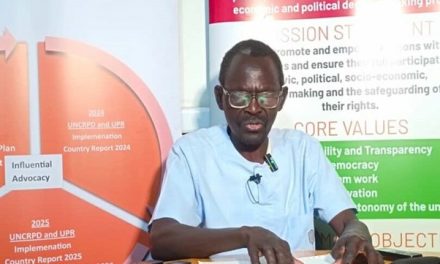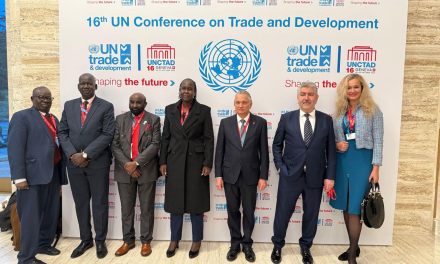
In Eastern Africa, the COVID-19 has negatively impacted on rural livelihoods: Building inclusive resilient pathways and forward looking early warning systems are critical
By Mohamed Aw-Dahir
Senior Officer (Programme and Partnership),
FAO Subregional Office for Eastern Africa
Subregional context
The Eastern and Horn of Africa region composes countries that are predominantly classified as Least Developed Countries (LDCs). And the majority of the poor people are living in rural areas, relying on rain-fed agriculture and related activities for living. Despite the recent positive economic growth in some countries like Ethiopia, Kenya, Rwanda and Uganda, there is still widespread poverty and inequality across the subregion. According to the World Bank, a third of the population in the region is living below the poverty line of US$ 1.25/per capita/per day. Gender disparities, rural-urban inequalities and unequal access to financial resources and assets such as land are some of the major socioeconomic challenges that contribute to the chronic poverty, especially in the rural areas.
Conflict, civil insecurity, frequent droughts and floods and other extreme weather events, continue to be the main drivers of food insecurity and malnutrition in the subregion. For instance, a major drought occurs almost in every five years. Because of the low-level emergency preparedness/ crisis management capacities, drought emergencies often develop into humanitarian crises. The 2020 Regional Report on Food Crises by the Food and Agriculture Organization of the United Nations (FAO) and partners confirms that an estimated 27.6 million people across the subregion (IGAD member states) were classified to be in crisis. This figure represents 20 percent of the total global population facing food insecurity. In addition, Desert Locust (DL) is wreaking havoc in the region. Ethiopia and Somalia experienced the worst DL invasion in 25 years while in Kenya it is the worst in 70 years. The DL has already destroyed the standing crops, hence affected the prospect of the next harvest. In Ethiopia, for example, nearly 200 000 hectares of cropland and 1 350 000 hectares of pasture and browse have already been affected by the Desert Locust.
The COVID-19 came on top of the aforementioned crises and has the potential to aggravate the pre-existing food security and nutrition challenges. It is also a threat to the region’s vulnerable agriculture and food systems. Most recent analyses by FAO and partners shows that food security prospects through 2020/early 2021 will likely to deteriorate as COVID-19 continues to impact on the agriculture sector. The subregion’s vulnerable -smallholder farmers, pastoralists and agro-pastoralists – will, therefore, be hardly hit, as they have limited coping capacities against COVID-19, while facing the multiple re-enforcing shocks of floods, droughts and Desert Locust.
The pandemic has also severely affected the agricultural commodity trade. For instance, horticulture businesses in Ethiopia, Kenya and Uganda have been affected by decreased domestic and international trade. Similarly, the extensive livestock production system which supports for about 40 million people in the region has also been affected by the closure of the primary and secondary rural livestock markets as well as export markets. To cite an example, the regional export of live animals and frozen meat during Ramadan to the Kingdom of Saudi Arabia has significantly contracted because of the COVID-19 pandemic. The Kingdom of Saudi Arabia – the main importer of region’s livestock – had lifted the ban it imposed for live animal imports from Somalia (and by extension to the Somali Regional State in Ethiopia) – but only limited success was registered.
In addition to crop and livestock subsectors, COVID-19 will continue to affect the subregion on a wide range of economic sectors: tourism, investment, transport, trade (including cross border and informal trade), remittance inflows, labour markets and, manufacturing. According to the United Nations Economic Commission for Africa (ECA), Africa’s Gross Domestic Product (GDP) growth may, in a best-case scenario, fall from 3.2 percent to 1.8 percent in 2020 due to the impact of COVID-19. In the worst-case scenario, it could contract by as much as 2.6 percent. The Eastern Africa Region is no exception.
The COVID-19 pandemic came at a critical time when the economies of the countries in the subregion were already struggling to recover from the impact of the recent shocks (droughts, invasion of pests and severe flooding). This calls for a multi-dimensional and multi-sectoral interventions to reduce the impact of these multiple crises on national economies, including the agriculture sector.
The provision of short-term relief to the most vulnerable is urgently needed. Similarly, protecting and ensuring the continuity of local food supply is critical by keeping the links between food producers and consumers alive.
Strong regional cooperation, enhanced partnerships, cross border coordination and sharing of lessons are corner stones to build inclusive resilient pathways to stronger rural livelihoods and food systems. These actions will enable rural communities withstand the impact of the present and future food crises. Strengthening the agricultural and food security information systems for effective and forward-looking early warning systems is one of the key components of a sustainable food system, which requires utmost attention. Such services will enable countries in the subregion to prevent or mitigate the effects of unpredictable future hazards, rather than just responding to disasters.




































